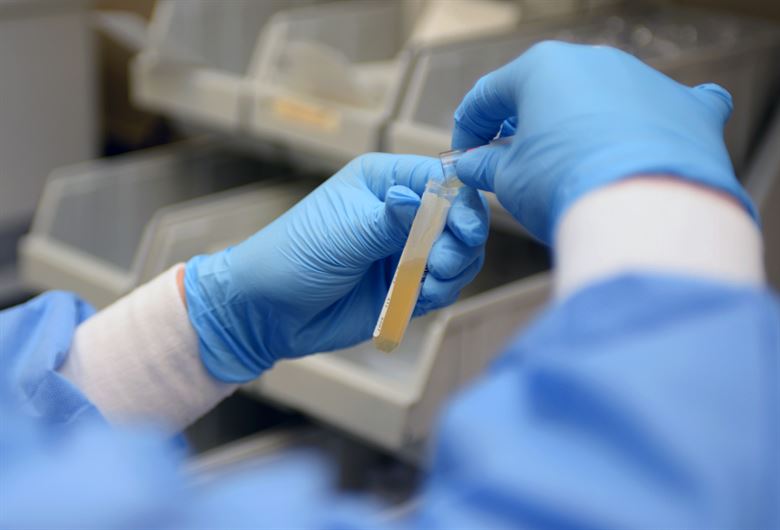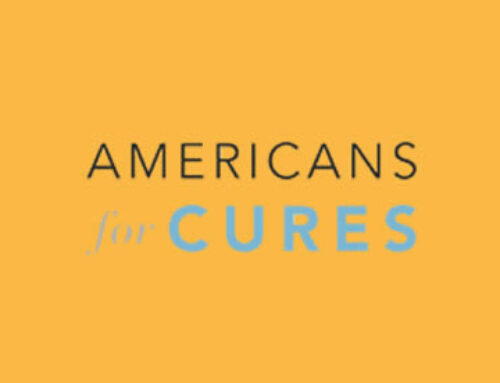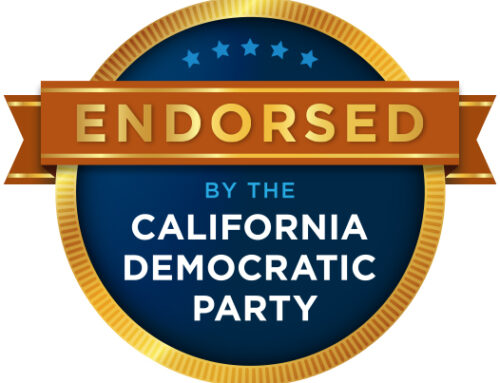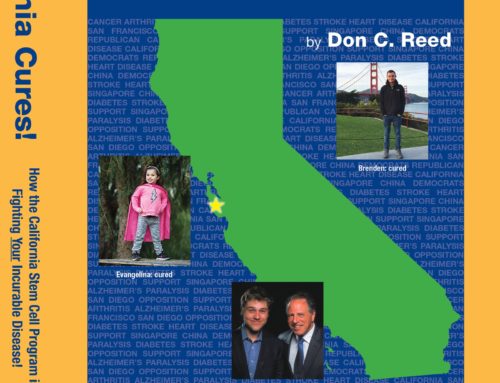My biggest fear these days is losing my wife Gloria. Her family dies of heart attacks, she’s a tad overweight, and we are both past the traditional three score years and ten. The doctor says she is a candidate for heart attack.
We are fighting back, of course. We exercise every day and eat relatively right. She keeps baby aspirin handy, and takes one or two to thin the blood, whenever she feels that heavy pressure on her chest.
But if there was a cure for heart attacks—especially one developed by the California stem cell program— what price would we not pay for it?
The cost of drugs and therapies can be outrageously high. Remember when pharmaceutics millionaire Martin Shkreli raised the price of his company’s life-death important medicine from $13.50 for a daily dose—to $750.00? Can you imagine that, raising the price of just one pill from thirteen bucks to seven hundred fifty dollars, because people need that pill every day? He wasn’t even ashamed of his greed, saying: “Everybody’s doing it…” (1)
If there was a cure for heart attacks, but it cost ten million dollars, that would be useless to us. Gloria and I would be forced to stick with baby aspirin.
So, how should pricing be determined, if the California stem cell program develops a cure for what ails you?
Not an easy question.
CIRM (the California Institute for Regenerative Medicine) held many long public meetings on this boring-sounding (Intellectual Property, snore….) but explosively important subject. Disagreements were fierce, sometimes dividing scientists, businessfolk, legislators and patient advocates. And complicated? Wow!
What guidance did we get from the California law, Proposition 71 itself?
“Requires the ICOC (Independent Citizens Oversight Committee, the board of directors) to establish standards to make all grants and loans subject to Intellectual Property agreements…to balance the opportunity for the state to benefit from the patents, royalties, and licenses that result from research and therapy development and clinical trials, with the need to assure that essential medical research is not unreasonably hindered by the agreements.”
As I saw it, the argument had three basic positions:
One: Any therapies developed from our state-funded grants should be free for Californians;
Two: the inventor had the right to set the price;
Three: therapies should available under price controls.
My gut instinct?
Number one would not work because who wants to work for free? If there was no profit motive, would biomed companies invest the billion plus dollars required to develop the product?
Number two is pretty much the way things are. Under the law of the land, the Bayh-Dole Amendment, the inventor owned his/her invention, and could charge whatever they wished. This seems cruel to me, like that seven-hundred-dollar pill.
Number three, price controls? It had been tried. It did not work. The phrase “reasonable pricing” had been attached as a condition to some government grants: meaning, products developed from grants had to be made available at “reasonable prices”. Unfortunately, the condition killed the research it was intended to help. The grants were not picked up until the pricing condition was finally removed. Companies, it seemed, did not want to develop a product they could not own.
Many people labored on the problem, but two above all deserve credit:
Ed Penhoet, biomed pioneer (former chair of Chiron, Inc. and vice Chair of the ICOC), provided deep background and understanding of the issues involved;
and Dr. Mary Maxon, prematurely white-haired scientist who buried herself in complicated paperwork and helped immeasurably in IP clarification.
Because of their work, backed up by Chairman Bob Klein, the entire ICOC board, and with the guidance of Senators and Assemblyfolks from Sacramento, everyone who takes a grant from CIRM today must agree on three stipulations:
One: they must share the knowledge developed, so their “research findings can be replicated by others”, not selfishly isolated like silos, separated and useless. (2)
Two: if there is a “Bombshell” breakthrough, “a direct monetary payment” must be given to the state stem cell research program: the amount varying on how much CIRM contributed.
Three: any marketable product developed with CIRM funding must have an accessibility program: to make the product or therapy available to the uninsured. This program must be developed by the scientist or corporation involved, and must be approved by the ICOC before being released to the market.
The ICOC developed those points, and established them into the framework of regulations by which the agency was governed. To make them ironclad, these conditions were later codified into California law by Senator Mervyn Dymally, in Senate Bill 1565:
“…the for-profit grantee agrees to provide a plan…to provide uninsured California residents access to resultant therapies… Also, grantees will provide the therapies at a discount price to entities that purchase them in California with public funds.” (3)
For a clarifying series of questions and answers on the “Intellectual Property and Revenue Sharing Requirements”, go to the source: CIRM. (4)
CIRM itself retains no ownership. (5)
California had found a way: to balance the needs of people who needed a cure for a chronic condition—and those who wanted to make a living providing such cures.
This post originally appeared on HuffPost.
Don C. Reed is Vice President of Public Policy for Americans for Cures, and he is the author of the forthcoming book, CALIFORNIA CURES: How California is Challenging Chronic Disease: How We Are Beginning to Win—and Why We Must Do It Again! You can learn more here.








